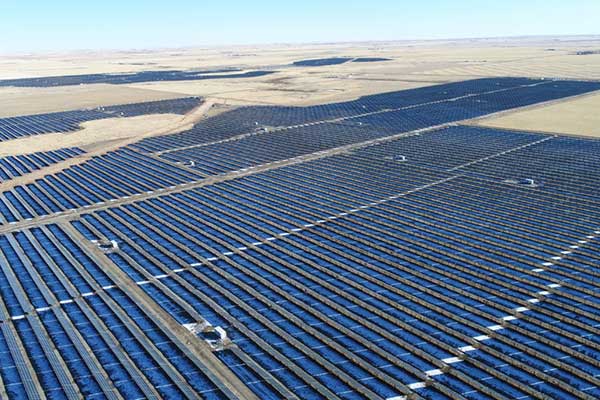The Alberta Utilities Commission issued a report that largely dispels concerns about the environmental and agricultural impact of the province’s burgeoning renewable energy industry.
This analysis emerges in the wake of the provincial government’s decision to lift a six-month moratorium on new renewable energy projects, highlighting a significant step towards embracing cleaner energy sources without substantially compromising agricultural land or the environment.
The report underscores a critical finding that, even in a scenario where renewable energy developments encroach upon Alberta’s prime agricultural lands, the anticipated loss of such lands would not exceed 1% by 2041.
This projection is particularly noteworthy against the backdrop of increasing global awareness about the need for sustainable land use practices amidst the escalating challenges of climate change and food security.
Addressing concerns about potential reclamation costs associated with solar and wind projects, the Commission’s findings suggest that these renewable energy forms present “well-understood and relatively contained reclamation risks” compared to more traditional industrial activities.
This reassurance is vital for landowners and the public who may be wary of unforeseen financial burdens in the future.
The timing of this report is critical, coinciding with the government’s removal of restrictions on new renewable energy projects.

A solar array that stretches over nearly 15 hectares of land just north of Métis Crossing in northeastern Alberta will produce enough electricity for 1,200 homes. (David Bajer/CBC)
It delves into a comprehensive analysis of the environmental and agricultural impacts, alongside considerations around funding for reclamation and the preservation of scenic landscapes, or “pristine viewscapes” as termed by the government.
The findings advocate for the compatibility of renewable energy development with the province’s agricultural and environmental stewardship goals, challenging the notion that renewable energy expansion is a significant threat to farmland.
Interestingly, the report identifies other sectors, such as pipeline expansion and urban development, as more significant contributors to agricultural land loss in recent years.
It also highlights the efficient use of land by wind farms, which occupy a minimal fraction of their leased areas, thus allowing for concurrent agricultural activities.
Moreover, the report calls for a nuanced approach to managing renewable energy development, emphasizing the importance of case-by-case assessments over blanket restrictions.
This perspective aligns with the views of experts like Martin Olszynski, a resource law professor at the University of Calgary, who criticizes the government’s previously restrictive stance on renewable energy.
Olszynski lauds the report for its evidence-based approach that counters the government’s concerns, suggesting that the existing regulatory framework is largely sufficient to address potential issues as they arise.
As Alberta navigates the complexities of transitioning towards a more sustainable energy landscape, the Alberta Utilities Commission’s report serves as a beacon of reason, advocating for a balanced approach that respects both the province’s environmental integrity and its economic aspirations.
The embrace of renewable energy, as demonstrated by the lifting of the moratorium and the critical insights from the Commission’s report, reflects a progressive shift in Alberta’s energy policy, setting a precedent for thoughtful, evidence-based decision-making in the face of global environmental challenges.













Comments